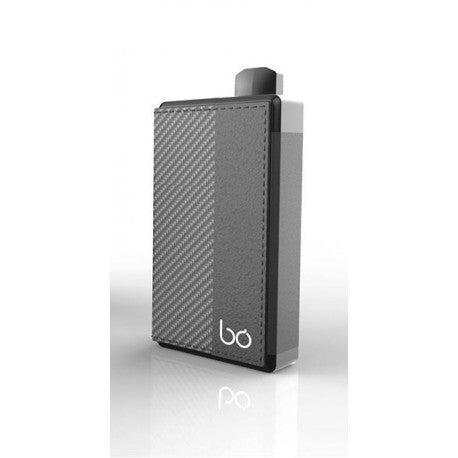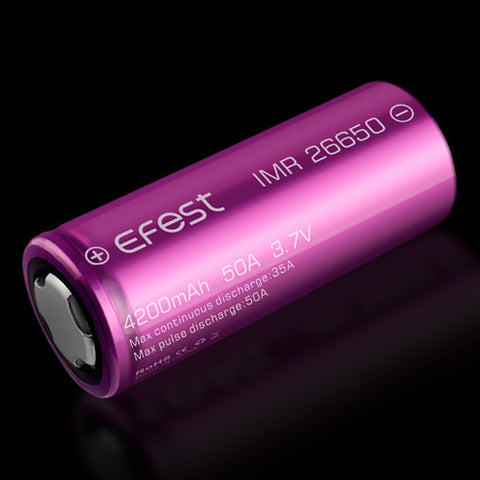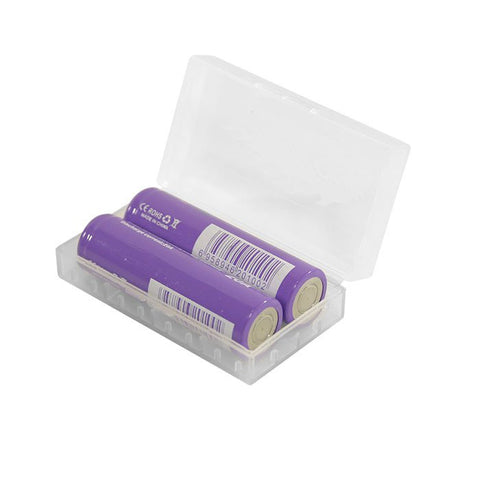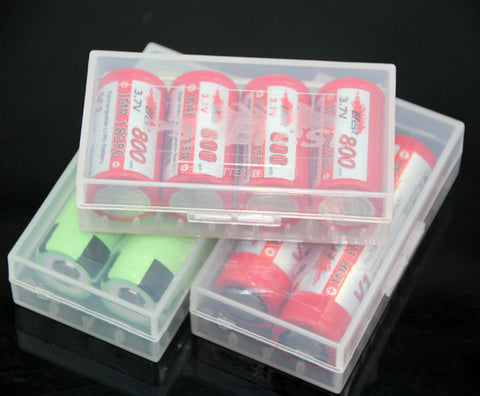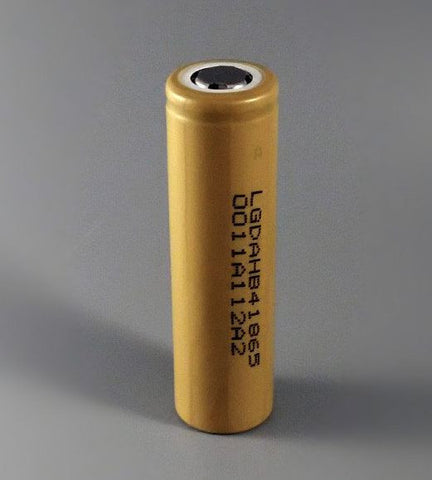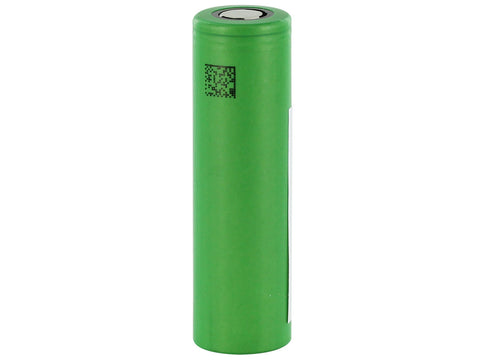
Sony VTC5 18650 battery
The Sony VTC5 has been one of the most popular 18650 cells for vaping, and for good reason.
We have two flavours of the VTC5 cell by Sony.
The VTC5 and VTC5A.
From Mooch's reviews at The ECF
The Sony VTC5
This is a great 20A continuous battery that exceeds its 2500mAh rated capacity, meeting its nominal capacity of 2600mAh. They were purchased from www.illumn.com and are are identical in appearance and performance to genuine VTC5's. The VTC5 hits as hard as the Samsung 25R5 and runs a bit cooler. Due to its higher capacity the VTC5 runs a bit longer than the 25R before needing recharging. It can be pulsed at up to about 50A before its voltage gets uselessly low.

Comments
- At 10A continuous it reached about 2480mAh. This is fantastic performance for a 2500mAh-rated cell operating at 10A so I am rating this cell at 2600mAh. This is the nominal capacity rating for the VTC5 so my results are typically what you will get.
- Its temperature at 15A continuous was 68°C, significantly below the average for a cell operating at its continuous discharge rating (CDR).
- At 20A continuous the temperature rose to 82°C. This is at the upper limit of the average for a cell operating at its CDR.
- At 25A continuous the temperature rose to 96°C. This is significantly above the average for a cell operating at its CDR.
- At 30A continuous the temperature rose to 107°C. This is much, much too high a temperature to set this current level as the CDR and exceeds my 100°C safety limit.
- At the 35A continuous the temperature rose to 116°C, significantly exceeding my safety limit of 100°C.
- I am setting a CDR of 20A for this cell since at this current level its operating temperature is at the upper limit of the average for a cell operating at its CDR. While operating any cell near its rated maximum current level causes damage to the cell, I would expect decent cycle life from this cell at 20A continuous.
- I have included pulsed discharges but I haven't set pass/fail standards for pulse testing yet. The discharges were done at 5sec on/30sec off, down to 2.5V. One chart shows the entire discharge at each level. The other chart is zoomed in to show the first 5 minutes to make it easier to see the voltage sag at different current levels.
The Sony VTC5A
The Sony VTC5A is a fantastic 25A 2500mAh battery. It runs at a higher voltage than the Aspire 1800mAh, VTC4/5, 25R, and HD2C and runs for almost as long as the VTC5. I want to do some more comparisons against other cells but this is probably one of the top three best 18650's.
Comments
- At 10A continuous it reached a bit more than 2300mAh. This is average performance for a 2500mAh cell at 10A so I am rating this cell at 2500mAh.
- At 15A continuous the temperature rose to 61°C. This is significantly below the average temperature of a cell running at its continuous discharge rating (CDR).
- At 20A continuous the temperature rose to 73°C. This is a few degrees below the average temperature of a cell running at its CDR.
- At 25A continuous the temperature rose to 83°C. This is the upper limit for the temperature of a cell running at its CDR and is an indication that this is the cell's true rating. There's no sign of extra sag in the discharge curve that would indicate that the cell was being operated at above its rating.
- At 30A continuous the temperature rose to 92°C. This is way above the average temperature of a cell running at its CDR and is an indication that we're above the cell's true rating.
- At 35A continuous, what some feel is the VTC5A's rating, the temperature rose to 105°C. This is a ridiculously high temperature and is above my 100°C safety limit. The voltage has also sagged considerably. This is absolutely not a 35A cell.
- I am setting a CDR of 25A for this cell. Operating at that level would bring the temperature of this cell up to the upper limit for a cell operating at its CDR. While operating any cell near its rated maximum current level causes damage to the cell, I would expect decent cycle life from this cell at 25A continuous.
- I have included pulsed discharges but I haven't set pass/fail standards for pulse testing yet. The discharges were done at 5sec on/30sec off, down to 2.5V. One chart shows the entire discharge at each level. The other chart is zoomed in to show the first 5 minutes to make it easier to see the voltage sag at different current levels.
We Also Recommend

